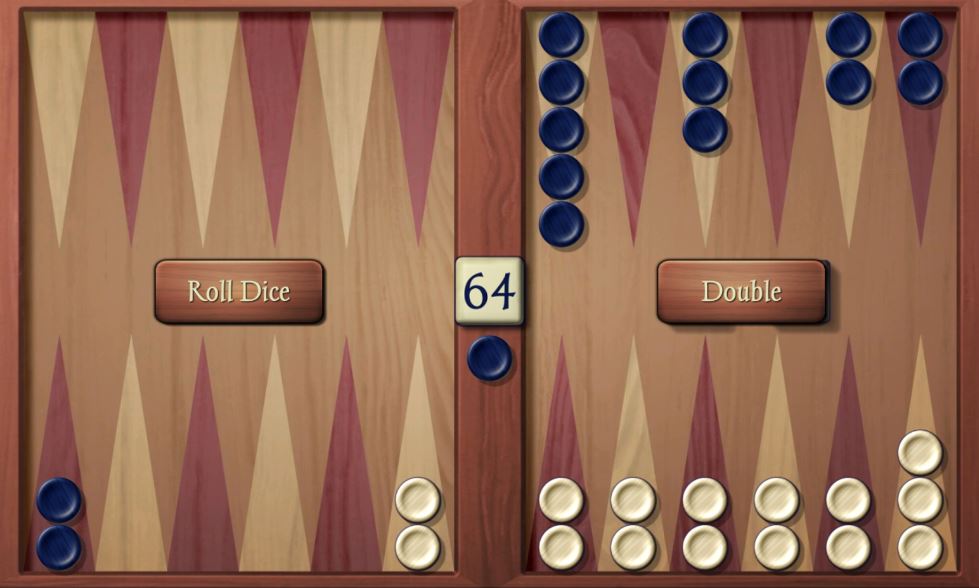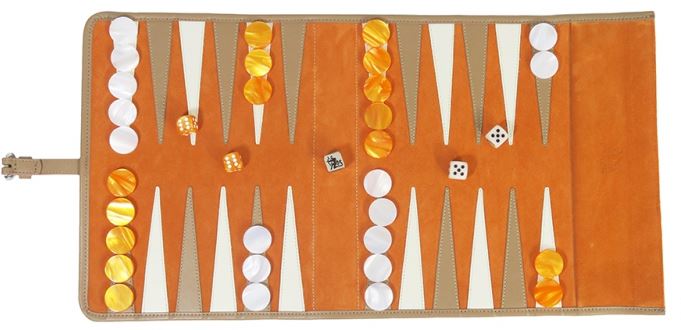Last updated on May 8, 2024
In essence, backgammon strategy involves hitting blots, securing points and racing. Almost all backgammon players could improve their game simply by hitting blots and securing points more often. In this Deluxe Backgammon post for beginners, we will take look at the tactics of priming and slotting.
To get ahead in the pip count you need to avoid getting your checkers hit. If you are continually trying to re-enter from the bar you will fall further behind in the race. In order to protect your checkers from hits from your opponent, you need to secure points. To secure a point on the board, you need to move two or more of your checkers onto the point. Not only does a secure point prevent your checkers from being hit, but they also act as a barrier to your opponent. Furthermore, if you string a consecutive series of secure points together you create an even more unsurpassable barrier. In backgammon terminology, a series of secure points is known as a prime.
Primes
A prime acts as an obstacle to the opposing checkers. For example, if you have secured a row of four consecutive points, which is known as a 4-prime, your opponent needs to roll a 5 or 6 if one of their checkers is next to the prime just to jump over it. The ideal prime is the 6-prime because it is not possible for a checker to jump over it. With a 6-prime checkers are completely trapped until the prime breaks down. 7-point primes are possible, but rare, and they don’t convey any additional advantage over the 6-prime. Strictly speaking, priming is a strategy. However, securing points on a move in order to build or extend a prime is considered a tactic.
As a backgammon tactic, securing points and constructing and primes on the board is a useful way to contain your opponent’s checkers. It limits your opponent’s mobility and can cause them to forfeit moves if you can trap them behind a 6-prime. Additionally, secure points offer a launching platform from which to attack your opponent’s blots. Both of these tactics can be used either for attack or for defence. Any beginner should learn to master these fundamental backgammon tactics if they wish to progress to an intermediate level.
There are two main ways of securing points on a backgammon board. The most obvious method is to unstack two checkers sitting on the same point and move them forward when doubles are rolled. The other way is to move two checkers from different points and have them land on the same point. Obviously, this method is purely dependent on the luck of the dice or by having your checkers spread in flexible positions.
Slotting
Another way to secure points is to slot a checker, leaving it in a position to secure a point on a subsequent roll. Slotting involves moving a single checker to a vacant point with the goal of securing it with another checker on a subsequent roll. Slotting can be a risky backgammon tactic as a blot can be vulnerable to being hit. However, it is the fastest way to secure points on the board without relying on pure luck. There are times when slotting is quite safe. Examples are when your opponent has checkers on the bar or when the point you slot is at a safe distance from any assault.
A slotted checker in position to help create important points on subsequent rolls is known as a builder. Ideally, you will have multiple builders spread out across the board. By increasing the number of different builders, you have within the range of your targeted points, the higher the chances of securing the point. It is for this reason why ‘candlesticks’, stacking many checkers on a single point, is such a poor tactic. It reduces the number of builders available and therefore limits the number of rolls that will let you secure a point. Building candlesticks is a common mistake by beginners, which wastes a lot of material. Learning to play backgammon without the fear of risk is a crucial part of the game.
Builders
If you have several builders within range of a targeted point the higher the probability of securing the point. The more builders you have within 6 pips of the target point, the more likely you will succeed. This is because there are multiple options and both dice rolls are available to be used on separate builders, each within range. However, don’t take unnecessary risks. If you have a number of builders converging on a targeted point there is no need to add additional risk by slotting another builder. Use the existing material to secure the point. Slotting too many builders just adds an element of risk by leaving an unnecessary blot exposed. This is particularly so if the opponent’s home board is strong as it may be difficult to re-enter from the bar.
If your own home board is well-structured it allows you to play more aggressively. This is particularly so if the opponent’s back checkers are trapped. In this instance, slotting can provide the opportunity to close gaps and build a stronger prime. Slotting nearly always incurs risk. Therefore, even if your home board is well-structured the decision to slot builders must take into account the opponent’s home board structure. As an example, it wouldn’t matter how well-structured your home board was if your opponent had a closed home board. In that instance, it wouldn’t be worth the risk of slotting. It would be far better to wait until your opponent has crunched their board.
Risk
Slotting is always a calculated risk. Slotting for a key point, however risky it may appear, is often the best option in several circumstances. It is worth slotting when winning without the point is difficult or the point is needed urgently to restrict your opponent’s movement. Slotting is also worth considering when sufficient material is lacking to make the point naturally (without slotting).
Understanding these basic backgammon tactics is essential. Making points and extending them into a prime makes for an effective offensive and defensive strategy. All players should master these tactics in order to improve their game.
Related content
A complete list of Playing Guides is available on this link. Backgammon rules are available on this link.
An article from The Gammon Press: Prime or Slot?


Slotting seems to be an overly risky backgammon tactic. Isn’t it better to sit back and patiently wait for an opportunity to land your checkers safely? Sooner or later you will roll a double and you can move two or more checkers safely.
Hi Addy, if you are playing safe and waiting on doubles, you are really relying on luck. Backgammon is a mixture of skill and luck. Winning at backgammon is about taking calculated risks so that your play is flexible and gives you the opportunities to maximise your dice rolls. Read our posts on avoiding direct hits and study the probability of the dice rolls to get a better idea. If you employ the concepts in those posts, I am certain your backgammon will improve. Thanks for commenting, Jason
Priming is something many backgammon beginners ignore, they simply adopt the running strategy along with a tendency to build towers. Then they find themselves in positions where they have no flexibility and are forced to make unfavourable moves. In backgammon, it is far better to take calculated risks early in the game, by splitting and slotting. Then you can start building your prime and possibly secure an advanced anchor. Priming can take patience but it is a powerful strategy in backgammon. Intermediates always have a range of backgammon strategies they can employ.